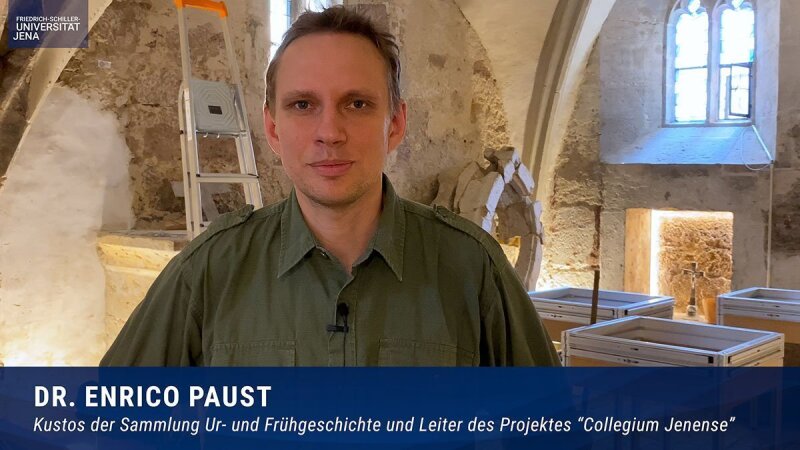- Life
- Research
Published: | By: Stephan Laudien
"University history with shovel and spade - the excavations at Collegium Jenense" is the title of Dr Enrico Paust's lecture, which he will give on Thursday, 10 October, at the Jena City Museum. The title succinctly outlines what visitors will be able to see for themselves from 27 September. The exhibition "Academic Life in the Early Modern Period at Collegium Jenense" invites guests to travel back in time to everyday life at Jena University from its foundation in 1548. The Collegium Jenense was the centre of university life, which is why the Kollegienhof is one of the three exhibition venues alongside the City Museum. The third venue for the exhibition will be the crypt of Jena's city church, the Fürstengruft. The exhibition will be officially opened on Thursday, 26 September at 7 pm in the Jena City Church. Prince Michael-Benedikt von Sachsen-Weimar-Eisenach, the senior of the House of Wettin and descendant of the university's founder Johann Friedrich, will be among those invited. The new exhibition will be on display until 9 February 2025.
Everyday objects of students and professors
"We are showing everyday objects such as glasses, combs, stove tiles and the remains of crucifixes that were once used by students," says Dr Enrico Paust. The curator of the Prehistory and Early History Collection at the University of Jena adds that written artefacts are also on display. These include the so-called Rosenprivileg, which Duke Johann Wilhelm issued to the university in 1570. The document states that the university had the right to serve its own beer and wine to university members in the "Zur Rosen" house. Because these drinks were exempt from tax and therefore cheap, a dispute arose with the city's restaurateurs, who feared losses. "We only show the Rosenprivileg for the first four weeks of the exhibition period," says Enrico Paust. If you want to see the original, you shouldn't wait too long. Overall, says Paust, the exhibition is a first summary of the project "Early Jena University History based on the Kollegienquartier and taking special account of the Rectors' Tombs", which was launched in 2018 and will run until at least 2028. The facial reconstruction of Professor Ortolph Fomann the Younger - who died in 1640 - is one of the showpieces of the exhibition, as is the robe of Professor Johann Arnold Friderici, consisting of a doublet, trousers and stockings. The clothing of the Medicine Professor and former Rector of the University (died 1672) has been painstakingly cleaned and reveals much about the wealth of its former owner. The garment and the everyday objects were recovered during excavations in the Kollegienhof. The reason for this was the destruction of the Kollegienkirche by a bomb hit at the end of the Second World War.
An extensive programme to accompany the exhibition
The exhibition will be accompanied by several public guided tours in the city museum. They are planned for 19 October, 16 November, 25 January and 8 February. An impulse tour will take place on 22 November during the Long Night of Science. Three lectures are also planned. On 10 October, Dr Enrico Paust will speak about the excavations at Collegium Jenense, while on 13 November, Dr Enrico Paust, PD Dr Stefan Gerber and Prof. Dr Joachim Bauer will talk about the early modern university: "From Dominican monastery to university campus". Julia Eberhardt will conclude on 16 January 2025 with a talk on "The pattern of beautiful morality - the epitaph figures of the Fomann family of professors and the dress culture of the early Baroque in Jena".
07743 Jena Google Maps site planExternal link
